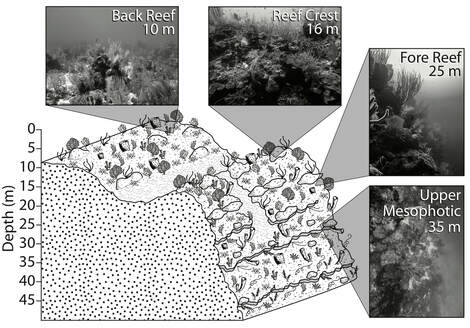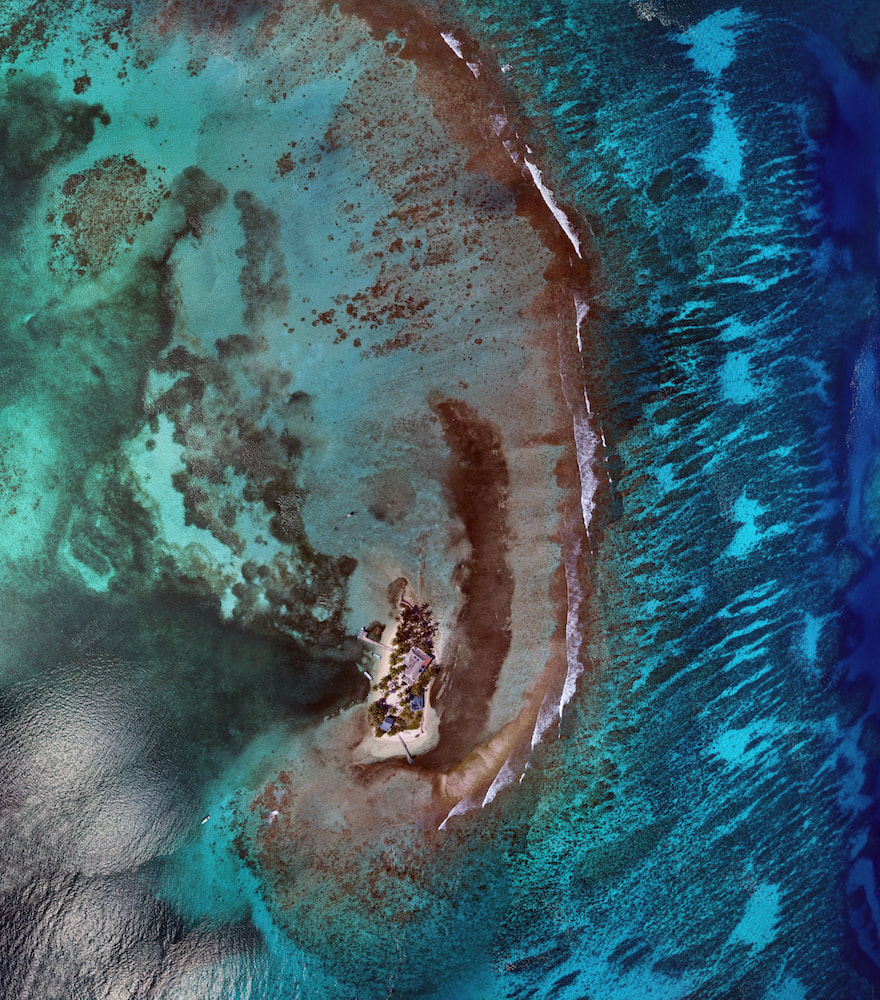The Breaking Point: Connectivity of Coral Populations on the Belize Barrier Reef
|
In order to fully understand the population dynamics of coral reefs in the Gulf of Mexico (GOM) and Florida, we need to identify potential source populations. Due to the consistently strong currents on the Yucatan Peninsula and into the GOM, coral populations on the Mesoamerican Reef may serve as upstream source populations. Located within Southwater Caye Marine Reserve, Smithsonian Institute’s Carrie Bow Cay Field Station resides on a small island atop the Belize Barrier Reef (BBR). Carrie Bow Cay offers direct access to both shallow and mesophotic coral ecosystems. Our research at Carrie Bow utilizes molecular methods to answer questions about coral populations and adaptation on the BBR.
This project builds into our larger Mesophotic Coral Reef initiative and deep coral exploration through the Cooperative Institute for Ocean Exploration, Research, and Technology (CIOERT). |
Assessment of Connectivity through Population Genetics and Biophysical Modeling
 Representation of reef geomorphology near Carrie Bow Cay with sampling depths
Representation of reef geomorphology near Carrie Bow Cay with sampling depths
How connected are coral populations on the BBR? We quantified connectivity of coral populations across reef sites (horizontal connectivity) and across depth zones (vertical connectivity). Using microsatellite markers for one of the major reef building scleractinian corals on the BBR, Montastraea cavernosa, we found that while all reef sites sampled had genetically similar populations, there was strong genetic differentiation between all shallow and all deep populations. However, regional analysis of M.cavernosa populations across the wider Tropical Western Atlantic revealed that deep populations in Belize are not genetically differentiated from shallow populations over 1,000 km away in the Dry Tortugas. These results suggest that deep populations in Belize may be serving as refuges for distant, rather than local, shallow populations, and that international management efforts may be necessary to maintain coral populations across large geographic scales.
In summer 2019, we expect to return to Carrie Bow with a suite of instruments including acoustic Doppler current profilers (ADCPs), surface drifters, conductivity/temperature/depth (CTD) sensors, a photosynthetically active radiation (PAR) meter, and a mini remotely operated vehicle (ROV) to measure local oceanographic conditions that may be contributing to the observed genetic break. With these data we can develop biophysical models to predict larval dispersal and connectivity.
In summer 2019, we expect to return to Carrie Bow with a suite of instruments including acoustic Doppler current profilers (ADCPs), surface drifters, conductivity/temperature/depth (CTD) sensors, a photosynthetically active radiation (PAR) meter, and a mini remotely operated vehicle (ROV) to measure local oceanographic conditions that may be contributing to the observed genetic break. With these data we can develop biophysical models to predict larval dispersal and connectivity.
Investigation of Mesophotic Coral Physiology with Algal Symbiosis and Gene Expression
How do shallow and mesophotic corals adapt to their different environments? Light limitation at mesophotic depths results in morphological, physiological, and symbiotic shifts and may influence population dynamics across depth ranges and broad spatial scales.
More detailed assessment of corals' responses to changing environments can be accomplished through differential gene expression studies. Using a tag-based RNA-Seq pipeline, we have sequenced Montastraea cavernosa transcriptomes from shallow and mesophotic populations on the BBR. Additionally, we are investigating how community structure of algal endosymbionts (family Symbiodiniaceae) changes across depth zones through molecular analysis of the ITS2 region of symbiont DNA.
More detailed assessment of corals' responses to changing environments can be accomplished through differential gene expression studies. Using a tag-based RNA-Seq pipeline, we have sequenced Montastraea cavernosa transcriptomes from shallow and mesophotic populations on the BBR. Additionally, we are investigating how community structure of algal endosymbionts (family Symbiodiniaceae) changes across depth zones through molecular analysis of the ITS2 region of symbiont DNA.

